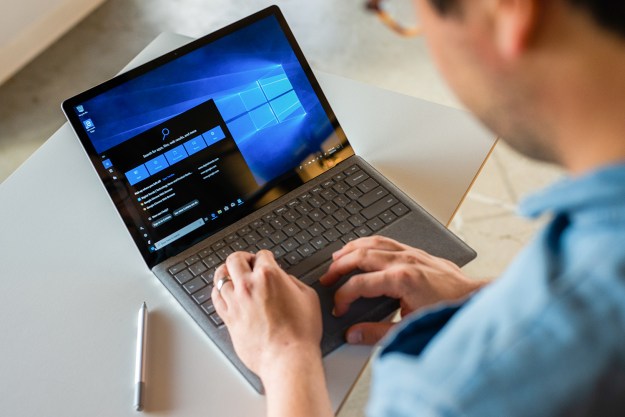Forget using your face or finger. Fujitsu said it teamed up with Microsoft to bring palm vein authentication to Windows 10 Pro. Right now, it’s meant for the workplace, designed as an alternative to built-in infrared cameras and fingerprint scanners. It’s based on the company’s PalmSecure technology that is already used in companies and corporations across the globe. Now it is officially supported by Windows Hello.
With facial recognition, Windows Hello will scan your face using an infrared camera for password-free access to Windows 10. Meanwhile, fingerprint scanners require you to swipe a specific finger over a sensor. In both cases, your face and finger provide unique patterns used by Windows 10 to confirm your identity.
With Fujitsu’s technology, you simply place a hand over a sensor. The veins in your hand create a unique roadmap, just like your fingerprint, but there is no swiping involved. This may prove to be a faster method of accessing Windows 10 given that fingerprint scanners require a precise swipe of your finger. Any deviation demands you to re-swipe your finger.
But having a unique pattern of veins is only part of the equation. They are buried under the skin as well, making replication nearly impossible.
“Being under the skin, it is very complex, meaning it’s very unique,” Akira Yonenaga, manager of Fujitsu’s Software Development Division, said. “It’s covered under the skin. It’s not easy to get other people’s vein information, so it’s a very strong forgery countermeasure.”
The palm-reading sensor can’t read your future but instead radiates the surface of your skin with infrared rays. The deoxidized hemoglobin traveling through your veins captures these rays, reducing the veins’ reflection rate. The result is a unique, black pattern that is saved by Windows Hello, and used as a comparison when you scan a hand to access Windows 10 Pro.
Fujitsu originally didn’t set out to specifically support hand-based veins. The company investigated different vein-based methods with other undisclosed body parts but concluded that the palm produced the best pattern. The catch is that the deoxidized hemoglobin must be actively flowing through the veins, thus zombies and severed hands won’t grant you access to someone’s PC.
Right now, Windows 10 Pro devices supporting Fujitsu’s palm-ready technology is only offered for the workplace. These solutions include the Lifebook U7x7, the Lifebook T937, the Lifebook P727, and a few others. Fujitsu did not indicate any plans to license its technology out to other PC manufacturers for mainstream Windows-based devices.
According to Microsoft, 60 percent of all security attacks are the result of compromised user credentials. That led to the development of Windows Hello and support for biometrics, enabling Windows 10 device owners to access their PC using their face or finger. While these methods eliminate the need for entering login credentials, hackers could theoretically get by using photos and fingerprints.
But as Fujitsu points out, veins reside under the skin, and the technology requires a constant flow of blood. This may be the best credential-free Windows Hello solution to date, and hopefully a feature we will soon see in mainstream Windows 10 PCs.
Editors' Recommendations
- After 10 years of headaches, I’m finally a believer in Windows on ARM
- Windows 10’s update screen will soon tell you if your PC supports Windows 11
- This Windows 10 trick gives your PC built-in ransomware protection
- Microsoft just made your Windows 10 Taskbar a lot more useful
- 7 things you didn’t know you could do in Windows 10


